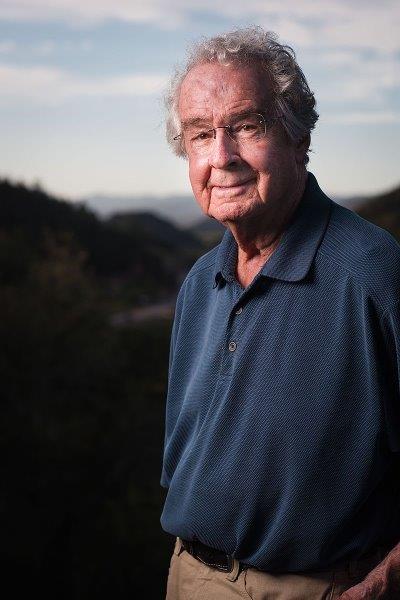I
t was the tipping point. In 1976, a Stag’s Leap Wine Cellars Cabernet won the best red wine at the Judgment of Paris, a blind tasting in Paris, France, a competition that pitted storied French wines against the best American wines. The Americans were supposed to get trounced. Instead, American wineries like Stag’s Leap Wine Cellars triumphed, accelerating the growth of the California and the U.S. wine industries.
For Stag’s Leap Wine Cellars founder Warren Winiarski success came down to a rectangle. As a student of the classics, Winiarski recognized the Golden Mean, the relationship between the sides of the rectangle, as a model for beauty and balance. Though commonly applied to art and architecture, Winiarski applied it to wine, in particular the wines coming from his SLV Vineyard in Napa Valley, whose varietals exhibited an appealing balance and harmony.
"It's a combination of fire and water," he says of the SLV Vineyard. "The fire comes from the volcanic soils of the upper part of the vineyard. The water comes from the lower part of the vineyard. The wines in the middle mediate between the two extremes, creating a harmonious whole."
In 2007, Winiarski sold Stag’s Leap Wine Cellars to Ste. Michelle Wine Estates and Marchesi Antinori, but kept his Arcadia Vineyard. Named for Roman poet Virgil's imaginary idyllic land, Arcadia includes soils from an ancient inland lake containing the remains of diatoms. These soils give the Chardonnay from here a lively minerality, an oyster shell taste that matches well with seafood, like a good Chablis. Winiarski bought the vineyard in 1996 partly because it provided fruit for Miljenko "Mike" Grigch, the American winemaker whose 1973 Chateau Montelena Chardonnay won the best white wine in the Judgement of Paris.
Over dinner at the Don Giovanni Bistro in Napa, I catch up with the winemaker about Arcadia’s 2016 harvest, hoping to gather insights for a book I’m writing about working in the wine trade. Though I’ve tasted and written about wine for decades, I’m determined to delve deeper into the subject by learning about it from the ground up from some of the masters of the art like Winiarski. Now in his eighties, he remains fit, trim and passionate about wine.
“I'm part of the oversight of the vines at Arcadia but I’m not doing winery marketing and financing, and that leaves more undiluted the sense of what is happening with the vines,” says Winiarski over a glass of Roederer Estate brut rosé. “It’s returning to the fundamental part that’s satisfying and makes for the sublimation of the fruit into something more meaningful for humans. I get a lot of satisfaction in being close to the vines and watching this annual cycle, watching the cycle closely, and becoming sensitive to its mood. It’s a bit like keeping in touch with the delicate changes of your spouse. You want to know what’s happening.”
Winiarski asks the waiter to decant a bottle of 2013 Stag’s Leap Wine Cellars SLV Vineyard Cabernet, a 40th-anniversary special bottling of the version of the wine that won the Judgment of Paris. The winemaker is a regular here, praising the restaurant for its food, wine, service, and “soul.” After the floor manager, Nazareno, decants the wine, Winiarski praises his skill, thanks him, and goes back to the menu.
“Don Giovanni is my favorite restaurant for the bistro style in Napa,” he says. “It has a lot of Donna Scala [former owner, now deceased]. Her food was for the spirit. That goal is maintained by her husband Giovanni who still runs the restaurant.”
Winiarski recommends the grilled octopus and beet and haricot verts salad for starters and the veal marsala as the main course, a great pairing with the SLV Vineyard Cabernet.
Though he has experienced many harvests, he hasn’t lost his enthusiasm for them. “They're all different,” he says. “I tended to be by the book earlier, but then I got more flexible knowing that if I paid attention to what was going on in the vineyard, there was more diversity. I was becoming more sensitive to what was going on in vineyard and relying more on my taste because I began to see that this diversity could be a powerful assistance to making beautiful wine.”
After the starters, Winiarski pours the SLV Vineyard Cabernet to accompany the veal. “It’s opened up,” he says, swirling the wine around in his glass. “It’s still youthful. It hasn’t lost its baby fat. It’s fleshy with a little edge that will soon be gone.”
As with all great wines, the SLV Cabernet changes in the course of the meal, displaying new flavors and aromas as dinner progresses. The wine complements the veal without overwhelming it, achieving a harmony and balance making for a memorable meal.
“I like wines that have an overall composition that produce a sense of completeness,” he says. “Such wines are not aiming at power as an end in itself.”
“How do you achieve that?” I ask, hoping to discover the secret.
“You have to listen to the grapes,” he says. “You have to go back to the vineyard.”
That’s exactly what we’ll do tomorrow. I plan to meet him at the Arcadia Vineyard to learn how to taste the fruit to determine when to pick. We’ll walk the vineyard, tasting the grapes and trying to decide when they are in perfect balance. Will I be up to the task? I’ll just have to wait and see. Dinner ends with a peach sorbet and plans to meet tomorrow at Arcadia.

